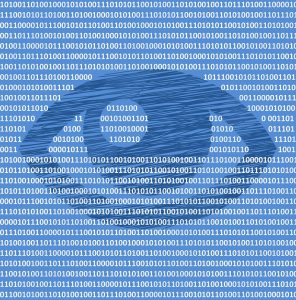
My apologies in advance to ITsoft’s audience and to the Google Analytic Spiders who are always looking for new content. I will admit that I am a bit in a whirlwind (nothing like that rare tornado that hit Port Orchard, WA on the 18th of this month) but basically just caught up in the Holi-daze. So recently while getting a package sent to India and was researching online what would be the most economic and efficient way to get this task done. I stumbled across this article at the USPS (United States Postal Service) website entitled, “How Cyber Smart Are You? Here is the link to a 10 question quiz that will help you see IF you are vulnerable. I am NOT giving you the answers… just the questions! You will need to go online and read about their explanation of the answers.
https://www.uspscybersafe.com/cybersafe-evaluation/
1.) Which of the following should you use to help you create a strong password?
1. a. An UPPERCASE letter.
2. b. A symbol (such as $, % or @).
3. c. Names of your pets or family members.
4. d. A, B and E.
5. e. At least 10 characters.
6. f. Your date of birth.
2.) How can you protect yourself when shopping online?
1. a. Check that the web address begins with “http://”.
2. b. Use a debit card instead of a credit card.
3. c. Check the reputation of the company at reputable review sites.
4. d. Click links sent to my email from unknown vendors.
5. e. Only use a public computer, like one in a library, when you shop.
3.) How can I stay safe when I’m using public or free Wi-Fi?
1. a. Use two-factor authentication for site login. (Two-factor authentication is a method of confirming a user’s identity, which uses a combination of two different components for verification, such as a password and a PIN.)
2. b. Only use public or free Wi-Fi when running low on your monthly data plan.
3. c. Use the free Wi-Fi over your phone’s cell phone signal when conducting financial transactions because it is probably more secure.
4. d. Trust that the provider has secured the Wi-Fi signal with proper encryption.
4.) How can you recognize an email phishing scam?
1. a. Look for obvious spelling and grammar errors and make sure the email is addressed to the right person.
2. b. Click on any links in the body of the email to see where they lead.
3. c. It went directly to your spam folder.
4. d. A and E.
5. e. Be suspicious of any email that asks you to provide personal data so the sender can “verify” your information.
6. f. A and C.
5.) What can put you at risk for identity theft?
1. a. A company that stores my credit card and other personal info experiences a data breach.
2. b. A person posing as a representative of my bank calls me and asks me to give them personal information such as my Social Security number or date of birth.
3. c. Someone steals my child’s Social Security number and creates a fake identity with it.
4. d. A and C.
5. e. Throwing my bills into the trash.
6. f. All of the above.
6.) How can I keep the information on my cell phone safe?
1. a. Remove software and factory restrictions from your phone, also known as “jailbreaking” or “rooting.”
2. b. Install apps that will provide security.
3. c. Enable the remote location and wipe features on your phone.
4. d. A and B.
5. e. Keep my apps and software up to date.
6. f. B, C and E.
7.) How can I keep my computer from being infected with a virus?
1. a. Scan incoming files for viruses after you open or save them.
2. b. Back up files to a separate drive or cloud service.
3. c. Avoid opening suspicious emails and attachments.
4. d. A and C.
5. e. B and C.
8.) How can I avoid being a victim of credit card fraud?
1. a. Keep all your statements and receipts in a filing cabinet.
2. b. Use a chip-enabled credit card.
3. c. Wait to update your computer software.
4. d. Give your card to someone for safekeeping.
9.) How can a computer become infected with malware?
1. a. Through use of peer-to-peer file-sharing programs.
2. b. By keeping data on removable media like USB drives.
3. c. Through email attachments.
4. d. All of the above.
10.) How can I tell if a website is secure?
1. a. It’s popular and used by everyone.
2. b. The site’s URL is preceded by https://.
3. c. It’s password protected.
4. d. The site’s web address is preceded by https:// and a padlock in the address bar.
5. e. Your web browser displays a red shield in the address bar.
So how did you do on this short quiz? Anyone get 100%?
Recent Posts
- ITSOFT Can Help Oklahoma Businesses to Become More Efficient and Organized By Installing Latest VOIP Phone and Messaging Systems
- ITSOFT can Help You Save Significant Monthly Expenses and Boost Your Income with Database Application Development to Make Your Business More Efficient
- ITSOFT Can Save Your Monthly Expenses and Increase Your Income by Mobile Phone Custom Application Development to Make Your Business More Efficient
- ITSOFT can save you a lot of monthly costs and increase your productivity
- ITSOFT Can Install Call Center Phones with 3CX Call Center VOIP Phone System



Recent Comments